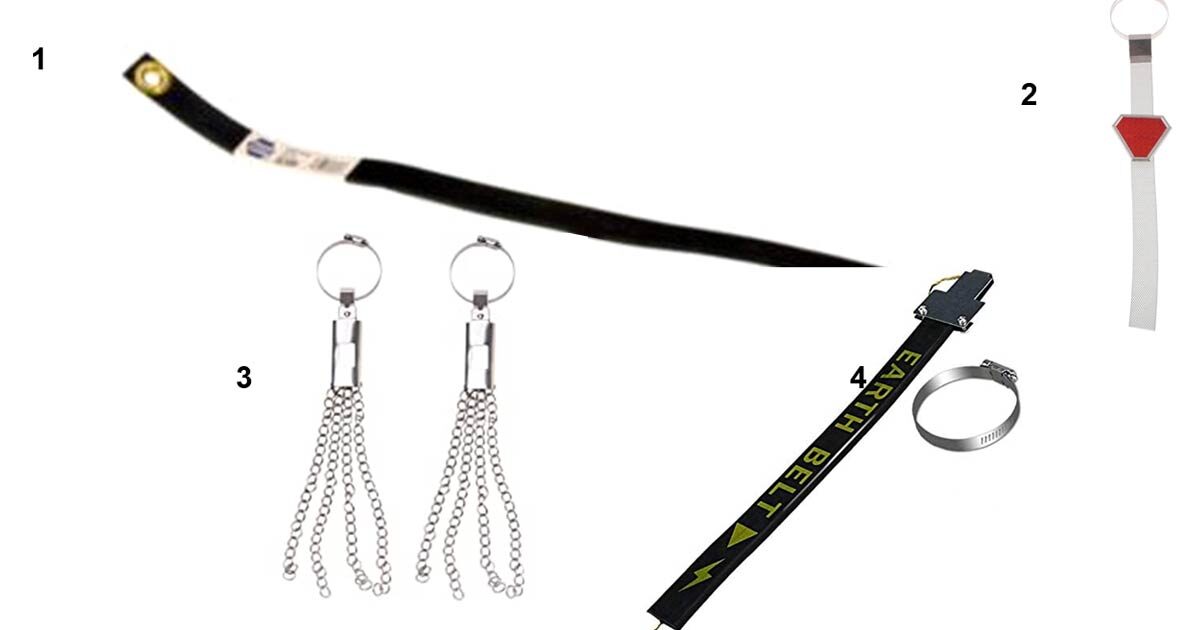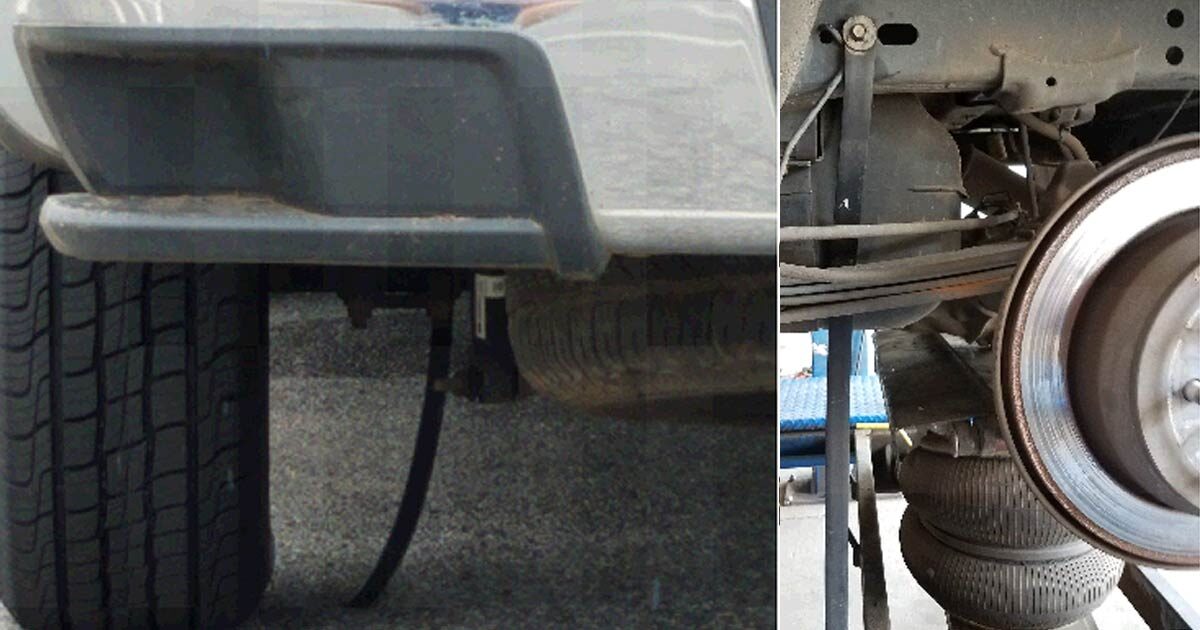
Do you think you need a static strap on your POV or Bug-out vehicle? The answer depends on what you are expecting from the strap and if you actually know what a static strap does. Do you want a static strap for EMP protection, for dissipating that pesky static electric shock exiting your vehicle (especially in colder climates), because your neighbor has one and it looks neat, it’s required for employment, or for one of those just in case situations?
For those that don’t know, a good static strap is a flat rubber strap impregnated with special conductive fibers (or wires) with a brass connector on one end and rough cut on the other. It is connected to the vehicle frame and allowed to touch the earth when installed. With only one job to do, when installed correctly, with “correctly” being the keyword here, it will do its job well; that job is to short or shunt any static build-up on or from the vehicle to ground – that’s all it does – nothing else – simple.
If you want a static strap solely because of EMPs, save your money. Past research (2002) has shown static straps make zero difference in protecting your vehicle in an EMP type static oversaturation burst. The good news is this research was done before vehicle electronics had any significant hardening or shielding, and discovered most vehicles survived the static with no or minimal damage.
Our use static straps has nothing to do with EMPs. I got tired of getting zapped when I would touch the truck after exiting so we use a static strap eliminating that problem. Its job well done – 100%. Later, I was required to have a static strap for entry into some pipeline and other restricted areas when conducting accident or criminal investigations. Lastly, I’m now retired and no longer go into areas requiring a static strap but will continue to use them due to static shock exiting the vehicle.

The Static Straps displayed above are the most popular from my Internet searching. Please note that I’ve used NAPA Straps for many years and are familiar with them and their performance. #1 is the NAPA NBH S206/S207 with 2, 3, and 4 being cheap, badly made Internet “bling” bargains, and, in my opinion to be avoided. Some website customers state the static straps work great for them. I’m one of those happy customers that have had most, if not all, static shocks when exiting the vehicle stop. Others claim using a static strap makes them feel better after a long drive while some claim their car doesn’t get dusty/dirty with a static strap installed. I’m calling “bogus” on both these claims because I’ve used them for over 35 years while driving over a million miles, especially driving down I-49 (from north Louisiana to south Louisiana) in “Love Bug” season, in post-hurricane mosquito outbreaks, and in our spring pollen storms and have never felt refreshed and still had a dirty car and truck after the trip.
Websites selling anti-static straps using hose clamps to attach them to the muffler, exhaust system, or “boat hitch” have lots of reviews stating they didn’t work. I’d ask all of them four (4) questions to trouble-shoot their problem: “Do you know what a static strap does,” “Are you parking on asphalt, “Are you using a real static strap,” and “Is the strap installed to the vehicle frame correctly?” That’s all the troubleshooting you need.
To be “correctly” installed, a ground/static strap should be sturdy and connected to the frame of the vehicle by bolt or screw and using lock washers, not “hose-clamped” to the muffler, etc. I’ve seen and inspected straps made of flimsy chains, exposed wiring, reflectors, logos, and other bangles and using hose clamps (photo #’s 2, 3, & 4) to attach them to vehicle’s exhaust system and have very serious doubts to their effectiveness at anything other than being bling.
The NAPA strap I use is impregnated with specially compounded rubber to discharge potentially dangerous static electricity and is approx. 1 1/16 wide, 1/8” thick, and 25” long with a heavy-duty brass fitting on one end, making for a good connection point. The spot where the brass ring on the strap meets the frame should be cleaned with a grinder, then the strap is bolted or screwed (including lock washers) on tightly. When properly grounded, it will discharge current up to 100 ohm-cm (maximum). Because I’m a firm believer in the “One is None, Two is One” concept and as a further precaution, I have a steel chain (not shown) attached to the vehicle frame on the passenger side as a redundant system of static dissipation. The back-up chain works well when I’m parking on an asphalt shoulder and can move the right side tires off the pavement allowing the chain to ground.

If I was unable to find a NAPA strap, I’d order a Gates 90331 30″ STATIC STRAP as it’s similar to the NAPA with the exception brass fitting being not near as “beefy” (2 lock washers are a must here if the Gates strap is used – I’ve used this brand also). At the time of this writing, the NAPA strap cost approximately $15 and the Gates is priced $7-$10 online, plus shipping on both.
Static Strap Pros & Cons
Pros: Should alleviate most static shocks when exiting the vehicle if you take the time to install it correctly. Meets MilSpec MILR3065C (NAPA and Gates straps only).
Cons: Too many cheap badly made products claiming to be static straps. May not dissipate static when parking on asphalt as asphalt is a poor conductor of electricity. Won’t help in an EMP.
Overall assessment: A good sturdy static strap will work well if installed correctly – use only a heavy-duty flat strap and/or steel chain attached to the vehicle frame – don’t fall for the bling and free hose clamp.
Bottom-line is if you’re trying to stop EMP don’t waste your money but if you’re needing one for
static electricity shock, it’s a good investment. As for us, as long as a static strap will dissipate the static shock from my vehicle on exiting we’ll continue use one. If we gain any extra protection from an EMP then we’re ahead of the curve.





Be the first to comment